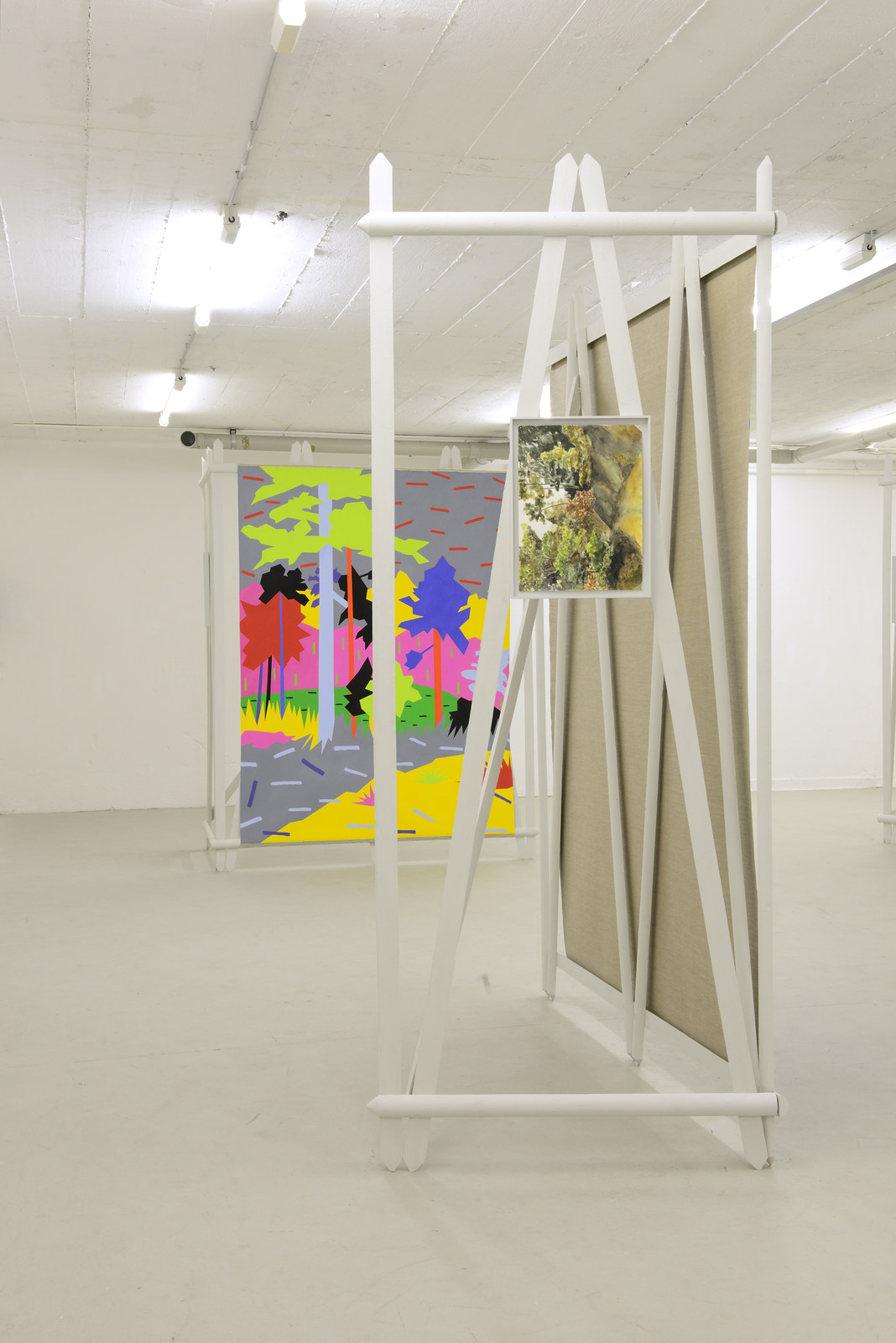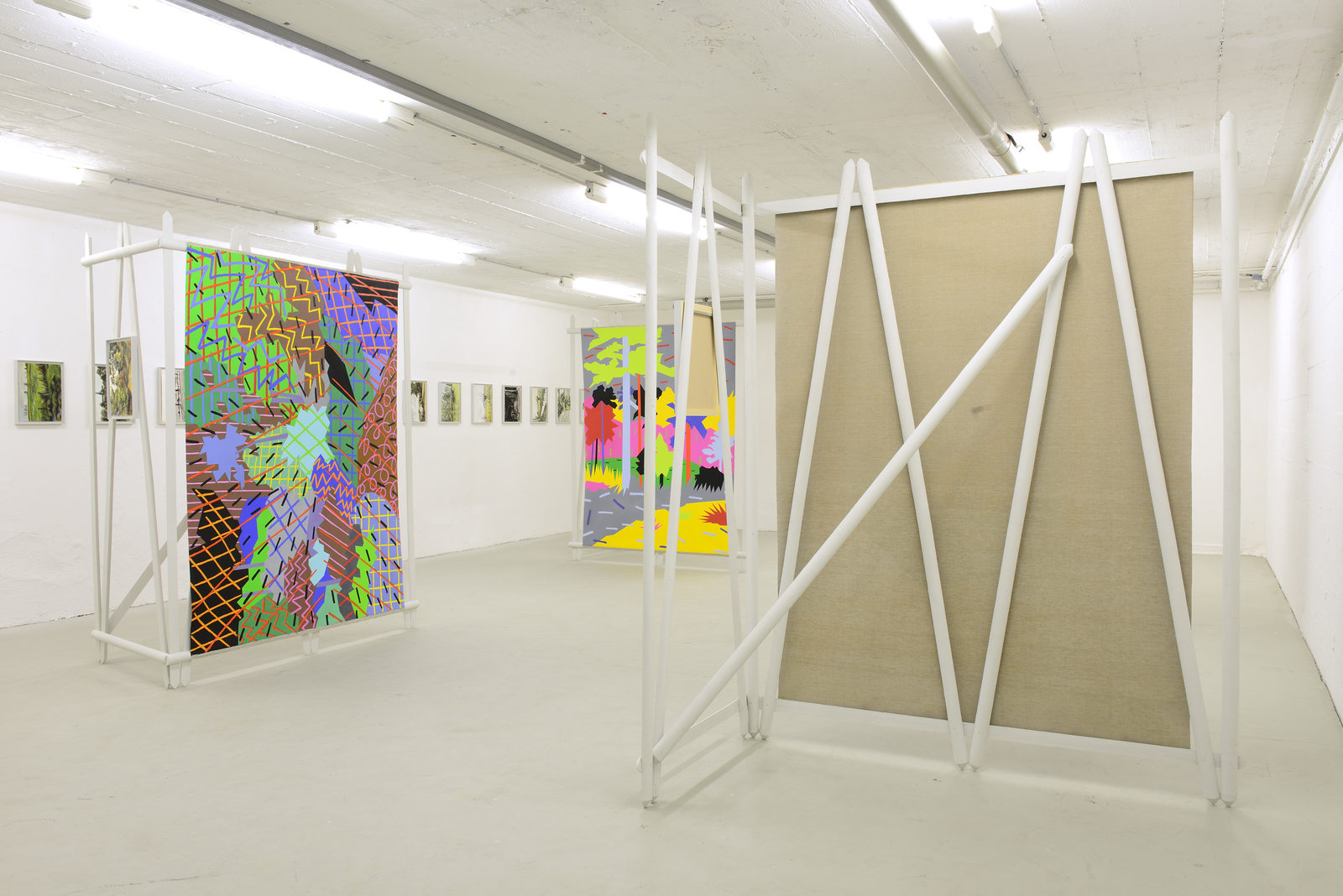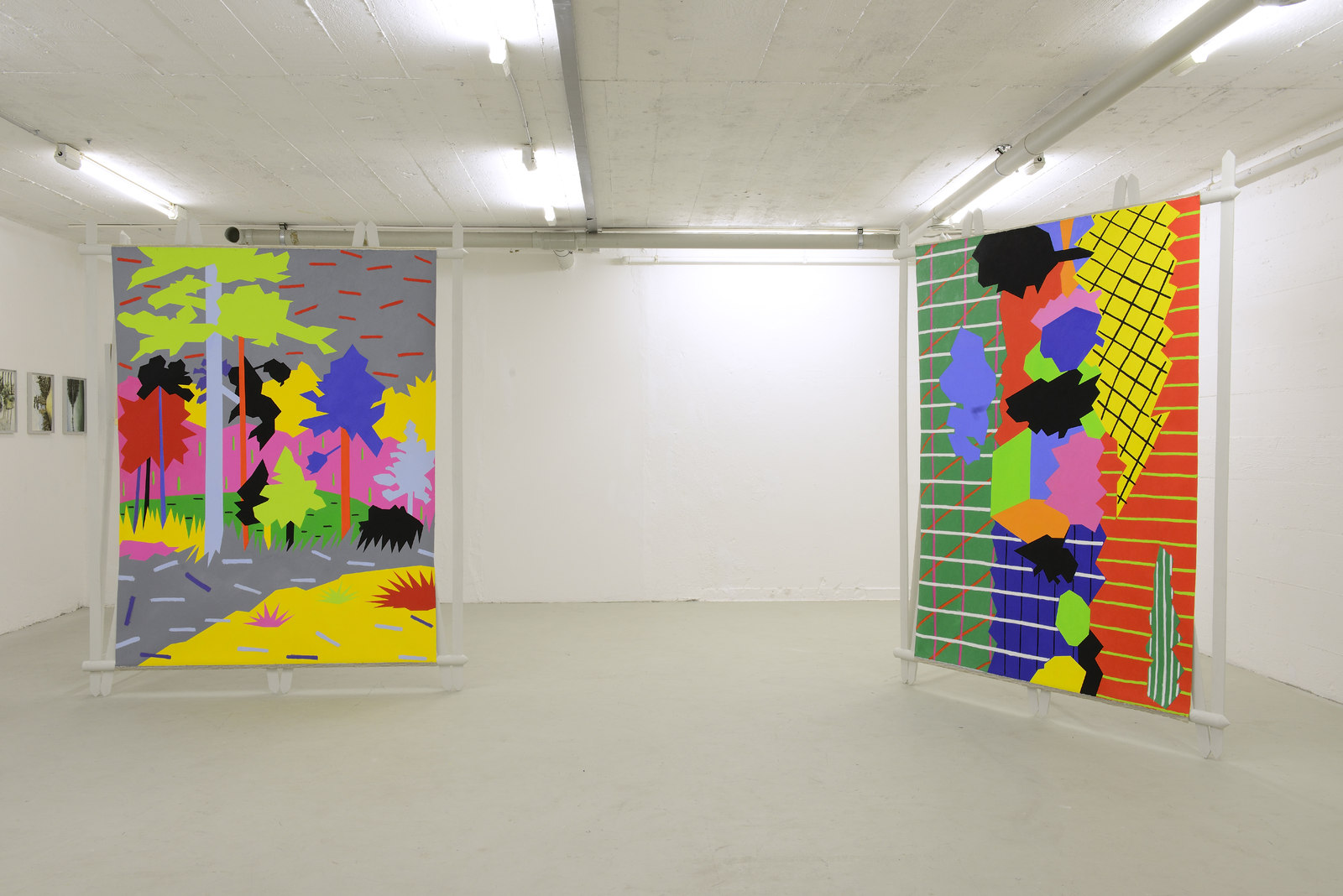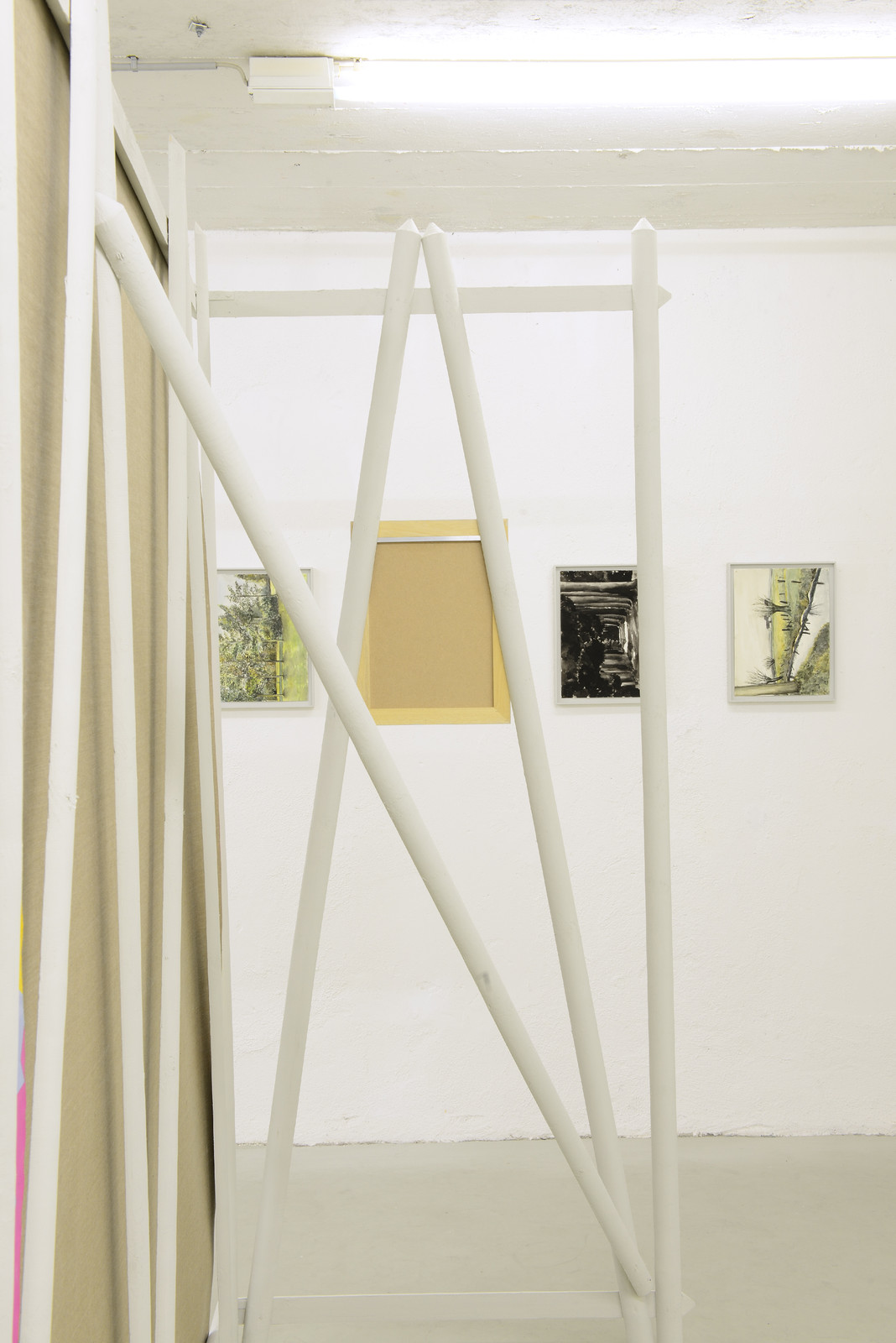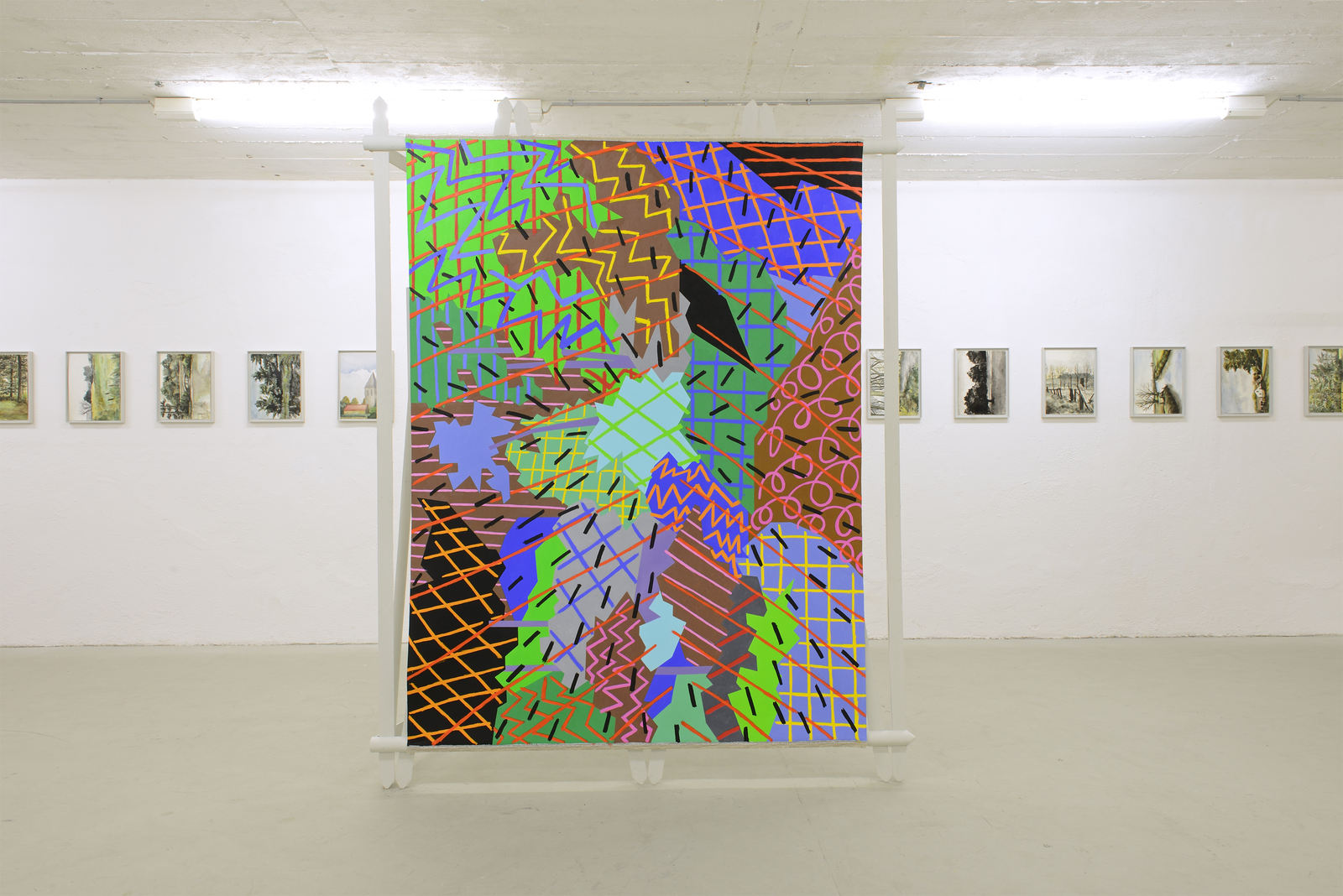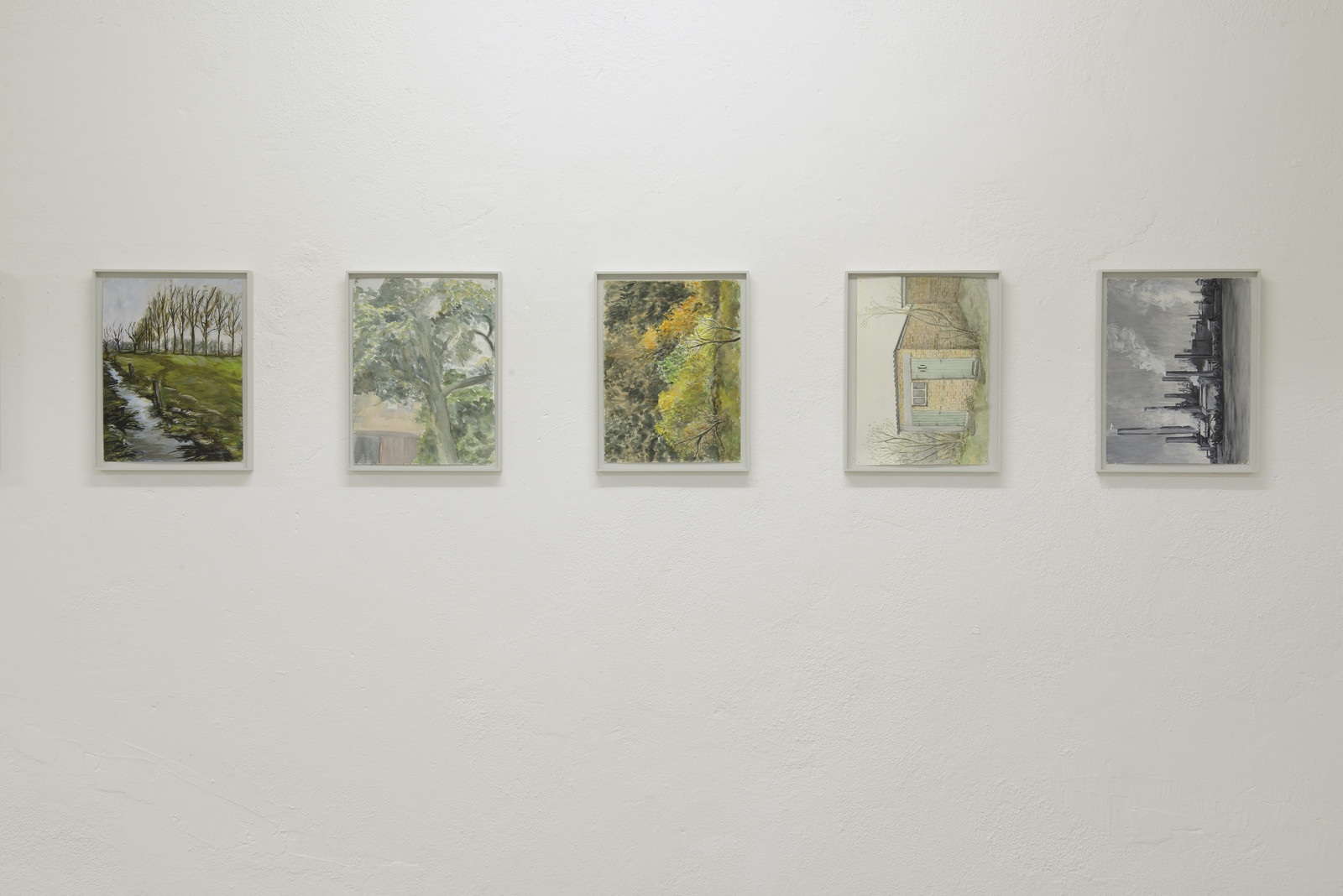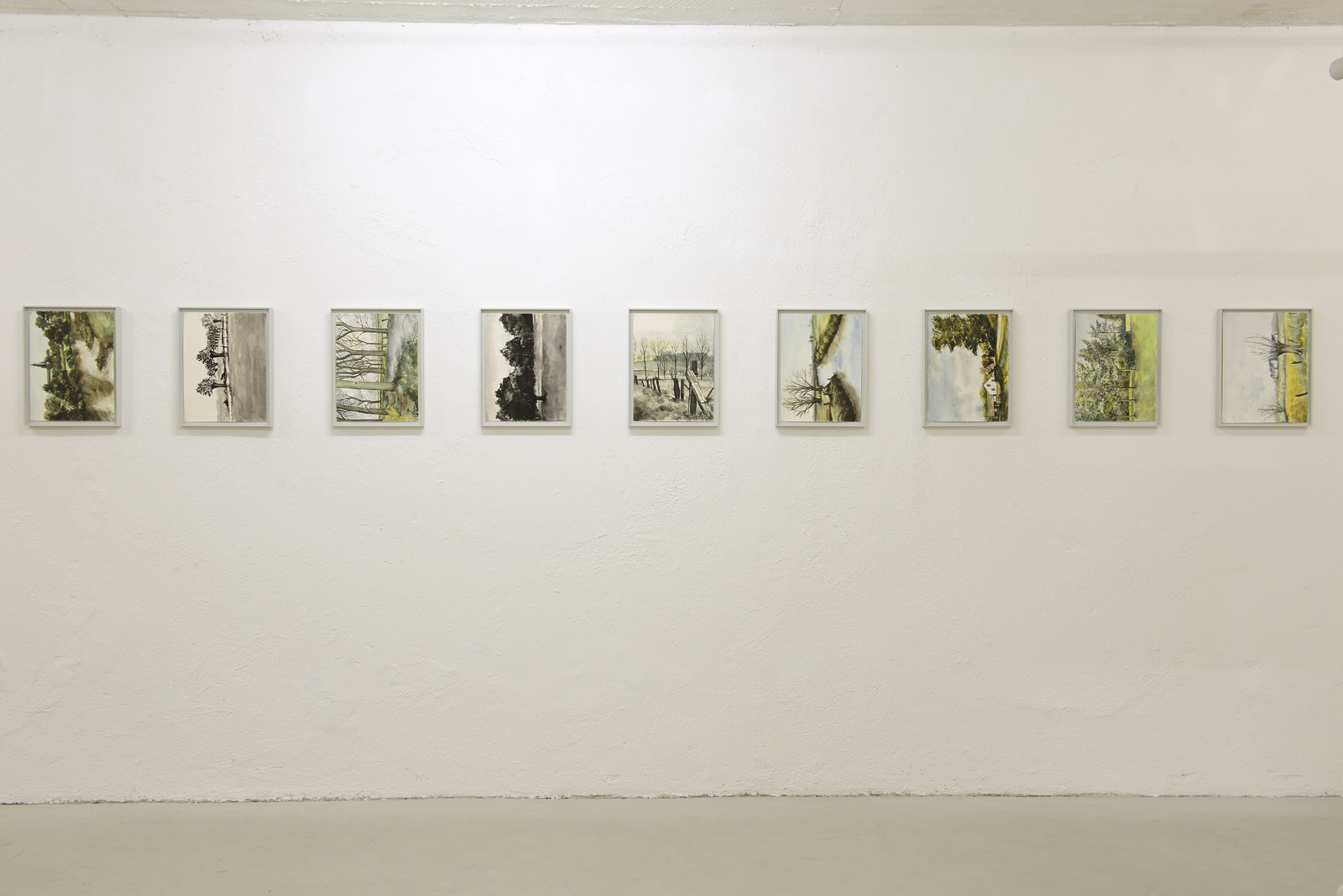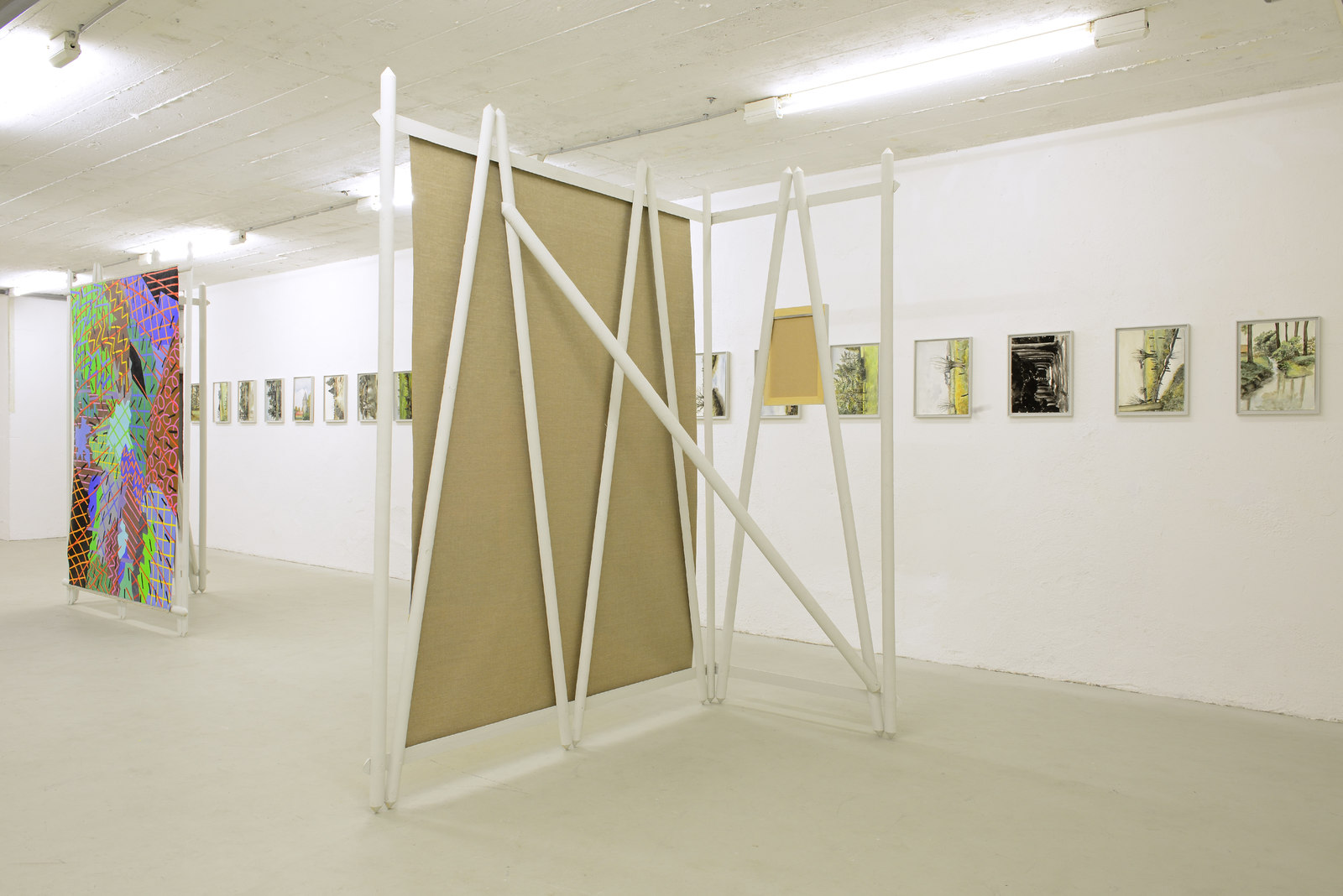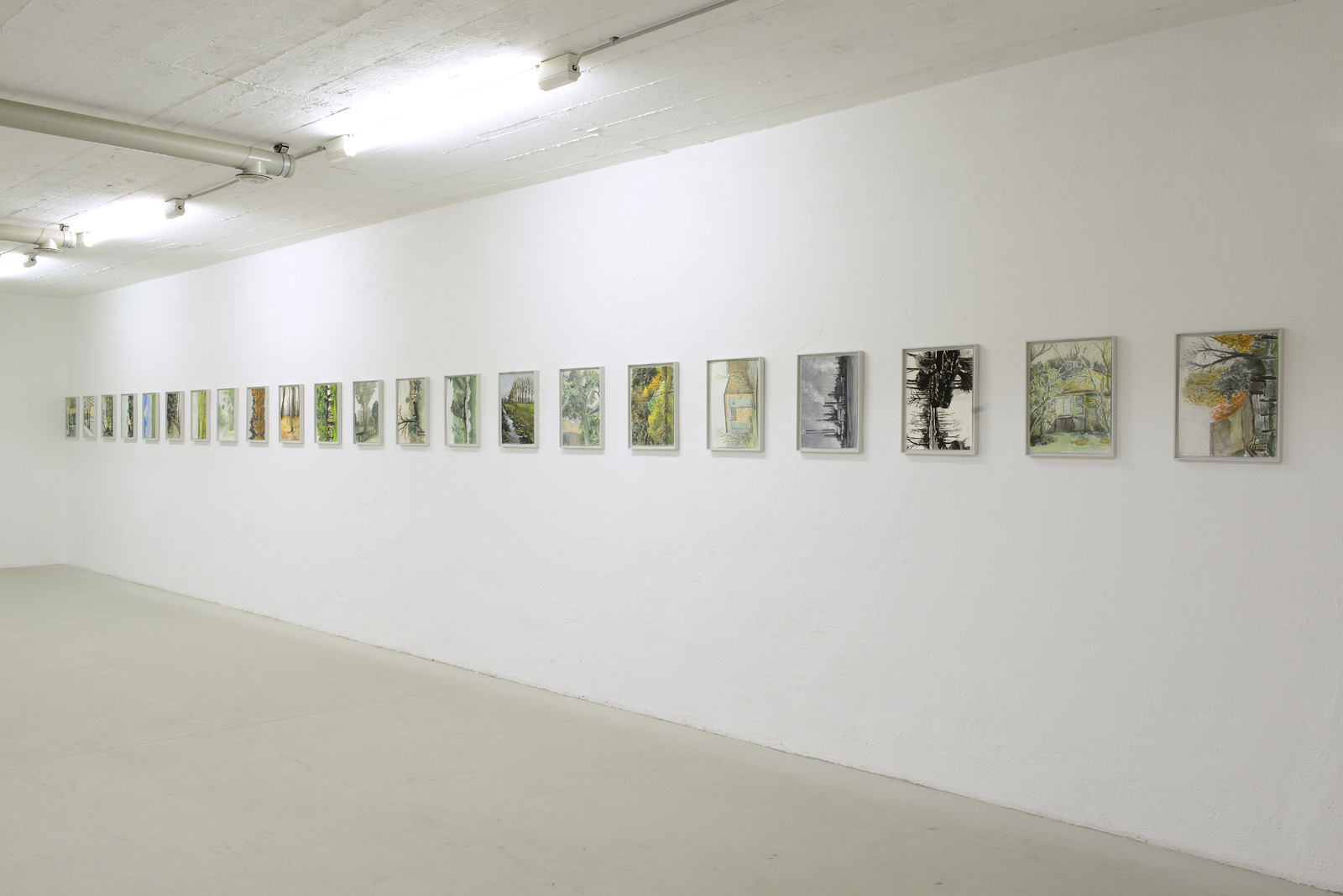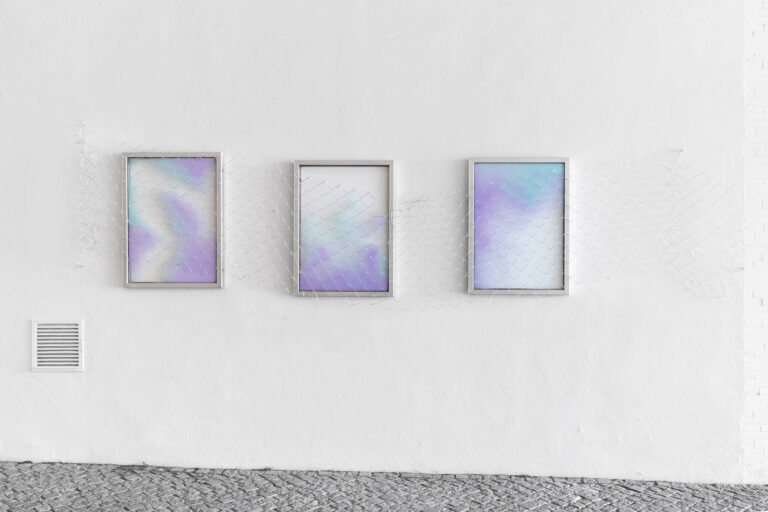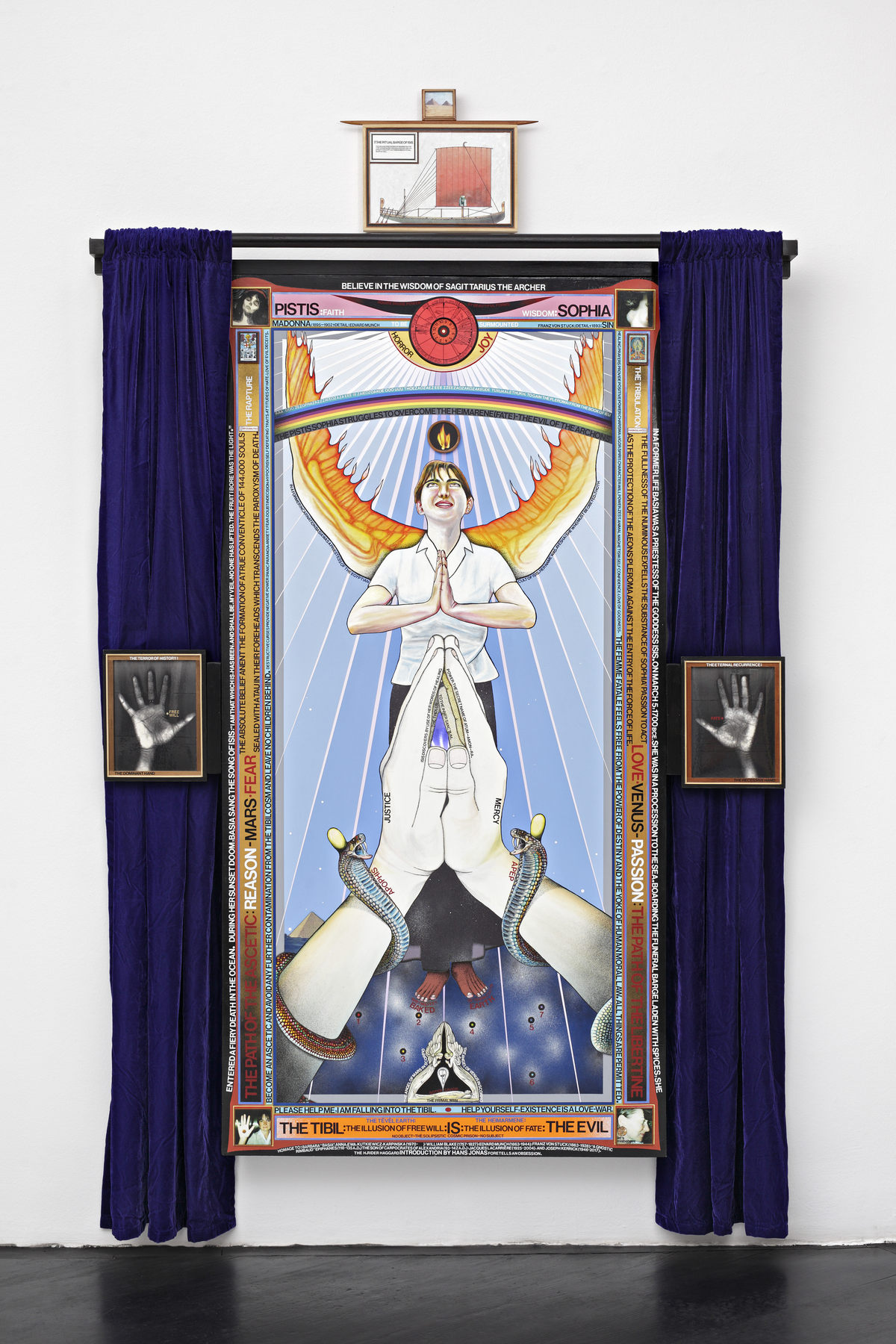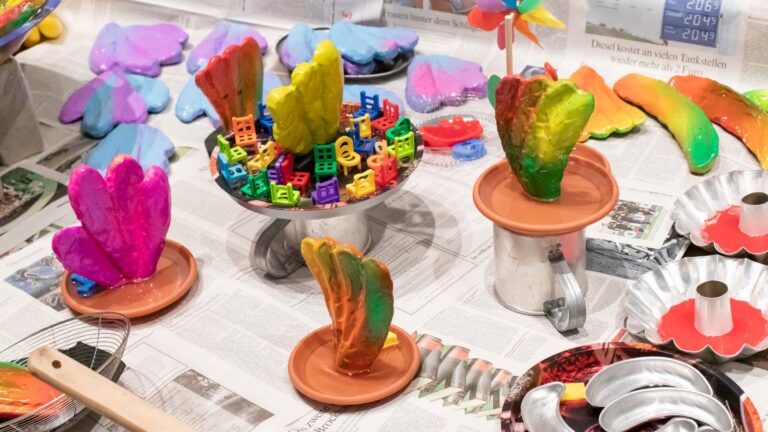Artist: Leen Voet
Exhibition title: Bert Vandael
Curated by: Hans-Jürgen Hafner
Venue: Kunstbunker Forum für Zeitgenössische Kunst, Nürnberg, Germany
Date: November 23 – December 23, 2016
Photography: Johannes Kersting, all images copyright and courtesy of the artist and Kunstbunker Forum für Zeitgenössische Kunst
“What to paint?” is for many the key question initiating the artistic process that connects paint/canvas and the accomplished painting. Yet, the question what to paint touches far more the conceptual aspect of painting than it reflects the actual procedure of painting, as painting here is taken for an a priori given and further suggests a hierarchy between subject and raw matter.
Painting (with capital, substantializing P) unfolds in relation between the technique, or if you want, craft of painting, the painted image (or picture), and the accumulated history/institution of painting as art. Or, as Helmut Draxler sets up his “painting as dispositive”, in the interrelations between peinture, tableaux and genre.
As much as the specific history of Painting resonates in the current disposition of Art it is doubtless that the relation between the ‘visual’ and the ‘art’ (with its even more obvious rooting in the pictorial as in the Flemish “beeldende kunst” or the German “bildende Kunst“ with their clear referencing of Bild/picture) has become more and more fragile or, better, permeable. In other words, is art no longer necessarily restricted to a visual practice, primarily based on the production of images/picture and therefore engaging with a specific technique, medium or genre.
In her recent works Leen Voet suspends the question of what to paint repeatedly in favor of ‘found’ visual and literary sources or ‘given’ imagery (literal pictures, or re-imagined illustrations with reference to texts) she converts into her own paintings, drawings and other media, these works evidently being in their own right.
There is for instance a voluminous body of 774 drawings of “Felix” (2009-2010) based on the painterly work of (today’s) marginal Flemish painter Felix de Boeck, in a second step collected and conceptually reframed in an artist’s book. Here Leen Voet translated de Boeck’s obviously inconsistent oeuvre, ranging from folky realism to a sort of spiritual abstraction piece by piece into the framework of drawing with its necessary abstractions of paintwork into pen-lines and rigorous stylization – reducing colour fields to black and white etchings, to name only the most obvious method.
Another recent work “Peinture Inacheve de Madame T.” (2015-2016), now consisting of 22 individual paintings and 22 drawings which are additionally collected in an artist’s book, is based on a random group of amateur paintings of beloved animals, Leen Voet collected and, once more, adopted either by re-painting or by translating them into drawings almost reduced down to the bones as the drawings erase the painterly for profiling the schematic/motivic character.
What could be seen in reference to practices developed under the umbrella of so called ‘appropriation art’ with its embracing of a critique of the concepts of originality and authorship, its favored techniques of piracy and simulation, makes up a different approach in the work of Leen Voet.
Her related works do not ‘appropriate’ for the very sake of it. It is not about a technical reframing of the found sources in different media or conceptually reformatted contexts. It is more that Leen Voet addresses the very nature of the pictorial and/or imagery almost by liberating pictures – are they made by others or by herself – by contrasting the differences between the technical, conceptual and original of the ‘given’ and the ‘made’ along the constituents of “painting-as-dispositive”.
For her first solo-exhibition in Germany at kunstbunker Forum für zeitgenössische Kunst, Nürnberg, Leen Voet takes this project even one step further. In her most recent series of new paintings and drawings „Bert Vandael“, she seeks direct dialogue to works she performed during her early education at art school.
Numerous works done in watercolour or in tempera were then academic studies after nature (or, more likely after photographs) and part of the educational routine examined and approbated by Leen Voet’s former teacher who lends his name at the work’s title.
Stripped bare from the original context, the sheer amount of pictures makes clear that what to paint was hardly the question when the manual training, evoking the complex of discipline and ‘skills’ as traditionally connected with an academic art education, was the essence of and reason behind what we receive as pictures.
Again, it could be said Leen Voet’s approach is to make this heap of visual, sociological, technical and historic information as embodied in the studies ‘interesting’ again by highlighting their respective qualities as pictures and images. Re-render the pre-existing ‘found’ studies by painting them big and making them thus ‘work’ – equally as painting, image and art – is what is at stake here.
The question what to paint, as it is immanent to the individual creative process, immediately turns into the more urgent one of “Why painting now?”
With the painted image today under pressure of ever-growing image industries and the effects of digitalization, Leen Voet’s artistic project points out a relevant alternative, emphasizing on the specific potentials that art as a visual practice having emerged from painting can provide.
For her exhibtion in the kunstbunker, Leen Voet not only produced a series of new large-format paintings but also worked out a detailed installation combining old studies and their re-interpretations to introduce her artistic project at large.
Text by Hans-Jürgen Hafner


